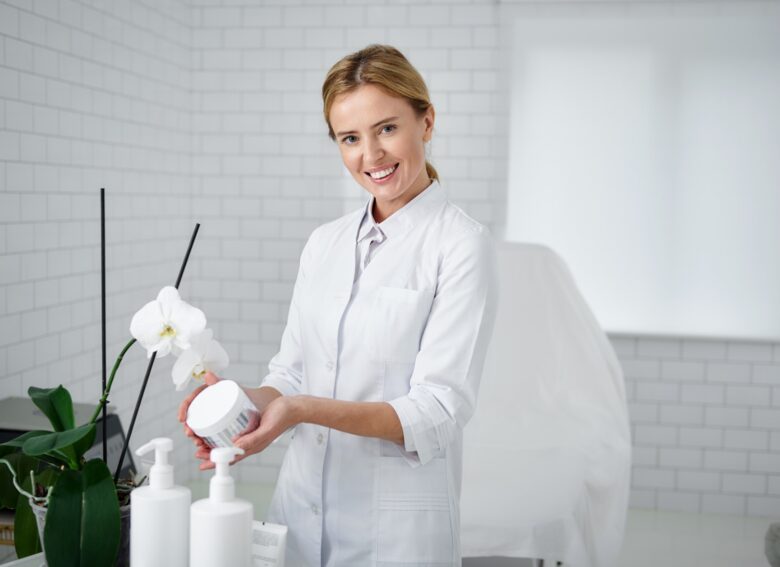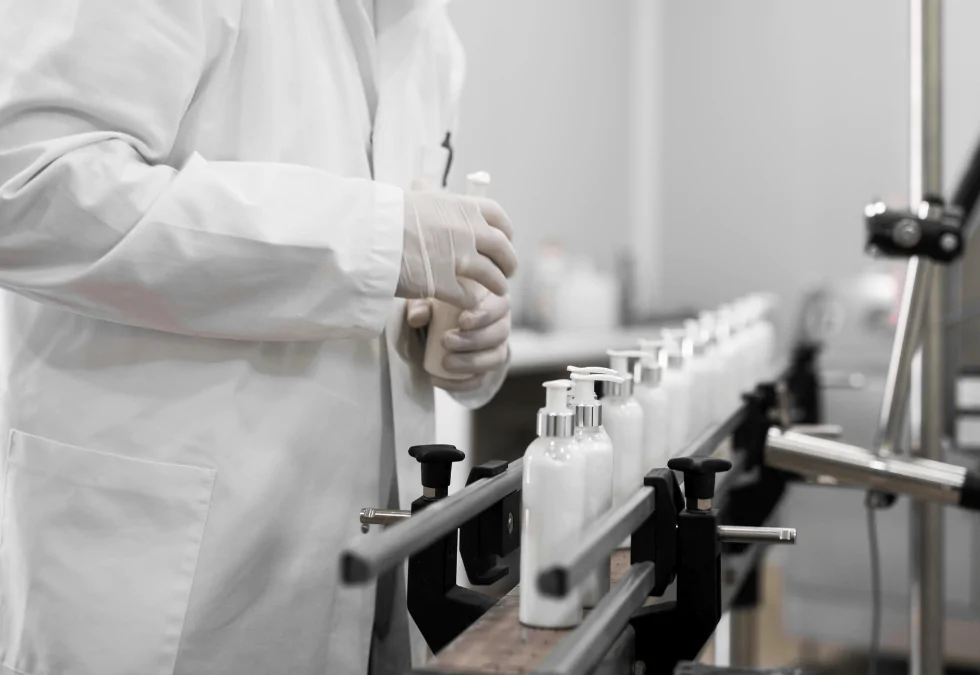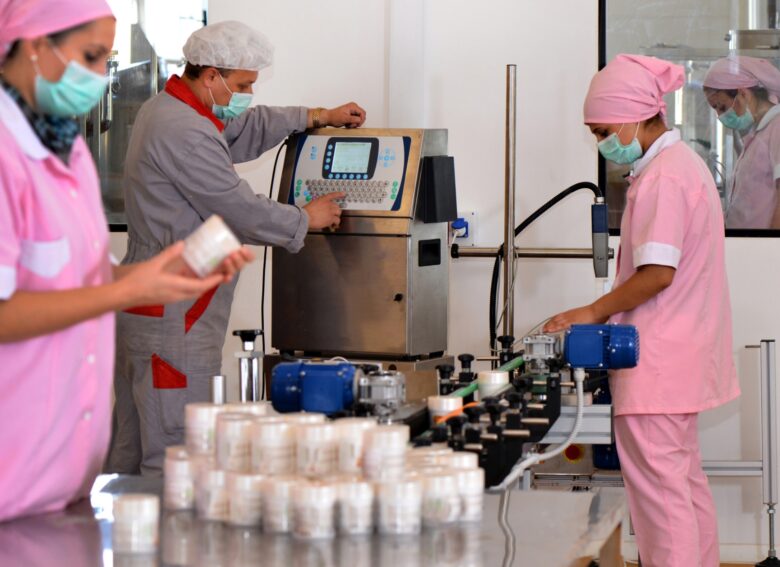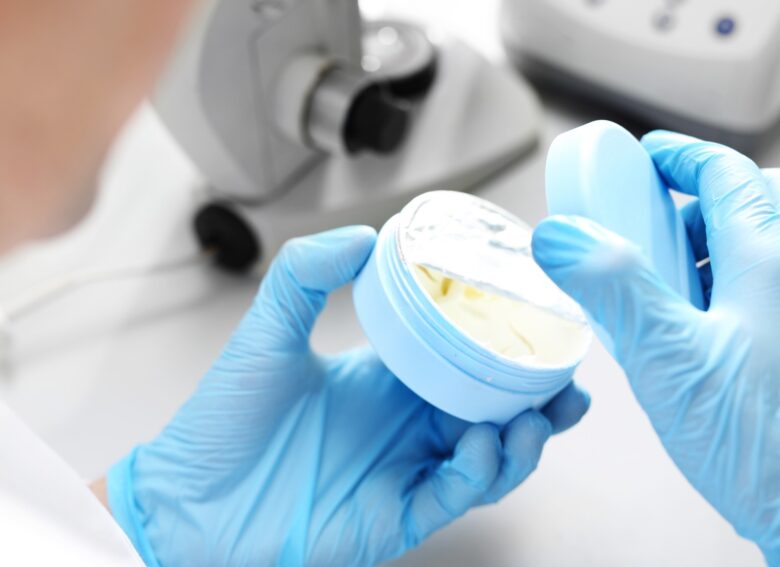The beauty industry is still evolving. Consumers are becoming more demanding when it comes to the composition of skin care products because they want to obtain high-quality and truly effective goods. The increasing demand forces manufacturers to seek new methods and approaches to producing products that combine safety and efficiency. In this article, we will explore the entire process of skin care cosmetics manufacturing: where it all begins and how to achieve the desired outcome.
Contents
Conceptualization and research
The initial stage of the production of skin care cosmetics involves defining goals and the direction of development, as well as conducting market research. Usually, a team of specialists in cosmetology gathers to discuss the concept, market trends, and demand for specific product forms. The analysis of competitors is also essential, including the reasons for choosing them, the types of products they offer, and their methods of implementation. A team of marketers can be involved to conduct surveys among focus groups of consumers. The goal of conceptualization and research is to understand which product can be successful in the skin care cosmetics market and satisfy the target audience.

Source: canva.com
Composition and selection of ingredients
The selection and proper combination of ingredients are handled by a special team of chemists, cosmetologists, and experts. This is a critical aspect of the production process because the final result depends on the team’s work, which must meet the requirements of consumers and the market. When selecting the composition, special attention is paid to the following nuances:
- Skin type. Dry, oily, combination – each of them has its own needs. Specific ingredients are adapted to meet these needs. For people with acne, pigmentation, wrinkles, the team selects ingredients whose primary task is to provide optimal care and address specific skin issues.
- Effectiveness and safety. The selected components must effectively address the client’s concerns, allowing them to experience the desired results. However, safety should not be overlooked, minimizing the possibility of irritation and allergic reactions.
- Natural and organic elements are highly desired by consumers. Therefore, skin care cosmetics manufacturing involves the use of plant extracts, oils, and natural antioxidants. The crucial step is to analyze and test the ingredients to ensure their safety for all skin types and their particular characteristics.
- Functionality and compatibility. The components are added to the product’s formulation for a reason. They must possess specific properties to work together with other ingredients, preserving their efficacy and helping achieve the desired outcome.
When selecting ingredients for an effective and safe product that meets market requirements, the manufacturer relies on a comprehensive analysis and takes into account the following factors:
- Effectiveness, specifically the ability of the components to achieve desired results.
- Safety. The components should not irritate the skin and should be safe for long-term use.
- Availability for commercial-scale use.

Source: unilogo.com.pl
Cosmetics manufacturing
Skin care cosmetics manufacturing involves several stages.
Preparation and mixing. All ingredients are weighted according to the recipe’s proportions and mixed in special mixers. The mixing process can be mechanical or thermal, depending on the composition and product requirements.
Heating and disinfection. The ingredients need to be heated to achieve the optimal consistency. If the product contains both oil and water, the emulsification process is necessary for proper blending. Disinfection is essential to eliminate the possibility of foreign microorganisms appearing.
Active components are added to give the product specific properties, for example, antioxidants and vitamins are used. The regulation of pH is managed by specially added acidity or alkalinity regulators.
Testing and adjustment. After completing all the necessary processes with the ingredients, quality and stability tests are conducted. Adjustments are made if necessary. The finished product is transferred to special containers for further filling into primary packaging.
Packaging and labeling are the final stages of production. Special labeling, including the date of manufacture and expiration date, is applied to pre-made containers, and then the finished product is portioned into them.

Source: canva.com
Quality control and testing
To determine how long a product can maintain stability and whether it will cause any side effects on the skin, special tests are conducted. Firstly, the same product is subjected to different storage conditions, including temperature fluctuations, air humidity, and exposure to sunlight. Afterwards, the consistency is checked for any changes in physical and chemical properties. Such stability testing enables the determination of how well the product can maintain its characteristics throughout its entire shelf life.
The product is always tested for its interaction with the skin to determine whether it triggers an allergic reaction. A group of volunteers is selected for patch testing, where the product is applied to a small area of the skin and left for a certain period of time. After the test is completed, the results are collected and recorded on a specific form. In case of negative results, the manufacturer identifies any production errors, corrects them, and repeats the test. Patch testing allows for determining the product’s safety and compatibility with different skin types.
To release a cosmetic product onto the market and demonstrate its safety and quality, the manufacturer must comply with the country’s legislation. This involves adhering to regulatory documents, such as registration and notification of the product’s composition, proper labeling and packaging, and compliance with safety and quality standards.

Source: canva.com
Packaging and labeling
In the field of cosmetics, it is very important to choose the right packaging materials for the following reasons:
- Safety, absence of interaction with skin care products to prevent changes in composition. If the packaging material is chosen correctly, the product will not spoil before its expiration date and will maintain its effectiveness.
- Protection against external factors – light, moisture, air, and microorganisms. Each product may contain certain components that are sensitive to external factors. Proper packaging protects the product from unwanted oxidation.
- An appealing appearance of the packaging is crucial when consumers choose a product. The overall design, specific elements, color, or shape are taken into account, aiming to create a positive impression of the product and encourage customers to make a purchase. The packaging should also be convenient to use.
In the marketing of skin care products, packaging plays an equally important role. Firstly, it is the first thing that catches the consumer’s eye. Therefore, all its parameters should make the right impression and stand out among competitors. Secondly, the packaging design helps the brand communicate with customers. Information such as composition, application methods, and storage conditions helps the consumer make a purchasing decision. Branding is also of great importance. Recognizable packaging increases customer loyalty and the likelihood of a purchase. Therefore, companies should consider making all elements familiar to the target audience, including the logo, colors, and font.
To release skin care products on the market, it is necessary to adhere to legal rules when labeling:
- List of ingredients in full volume. Moreover, the components themselves are arranged in the list in descending order of their concentration in the composition. Thanks to this rule, the customer can choose a suitable product, avoiding allergies or other side effects.
- Warnings and instructions for use. This includes warnings about possible reactions of the body, age restrictions, or other individual characteristics of a person. All instructions should be translated into different languages, and the method of their presentation should be understandable to the target audience.

Source: canva.com
Conclusion
The production of skin care products is a complex process that requires the observance of multiple stages and safety measures. Considering the trend towards eco-friendliness and naturalness, consumers are looking for a product that can effectively address their cosmetic concerns while having a plant-based composition.
